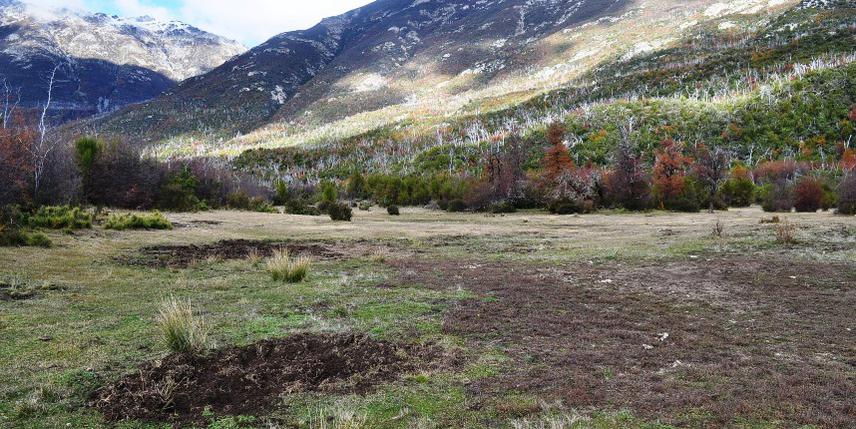Sebastián A. Ballari
Other projects
6 Oct 2015
Interaction Between Non-Native Ecosystem Engineers: The Case of Wild Boar (Sus scrofa) and Cattle (Bos taurus) in the Nahuel Huapi National Park, Argentina
23 Feb 2024
Wetland Conservation and the Impact of Invasive Alien Mammals in Northwest Patagonia
Quantify the impact of an invasive alien species on biodiversity of the of Humid Chaco eco-region, and to generate management guidelines to minimize this impact.

The wild boar is a species from Eurasia and North West Africa and was introduced in Argentina in 1906 as a sport-hunt species. The National Park El Palmar (NPEP) has an extension of 8,500 hectares and was created in the year 1965, to preserve a representative sector of yatay palm habitat. Seedlings and seeds of yatay palm, ground-nesting bird´s eggs, fruits, bulbs and roots, are consumed by wild boar, who caused also the dispersal of exotic vegetation invaders and constitutes a potential transmitter of diseases. Due to the negative impacts of invasive alien species on the local biodiversity since 2006 it has been formally implemented a Control Plan of Exotic Mammal Invaders in the NPEP. Ground-nesting birds populations such as greater rhea, spotted nothura and red-winged tinamou; and population of yatay palm could be threatened either by the action of wild boar and by the tasks of hunting involving its control.
The objectives of this work are: assess the use of habitats by wild boar, rhea, spotted nothura and red-winged tinamou in NPEP; quantify the impact of wild boar on ground-nesting bird populations; determine the impact of wild boar on populations of yatay palm; identify areas of importance for conservation. To carry out these objectives we selected a variable number of plots. For the wild boar shall be determined where tracks, stools, ground rooting and roosts will be recorded. For the rhea, sites with good visibility will be used for recording the number of groups and their size. For spotted nothura and red-winged tinamou it will be used the line-transect technique.
To analyse the wild boar depredation: natural and artificial nests of the studied species will be monitored periodically during the reproductive season; seedlings of yatay palm randomly found on the transects will be identified with permanent marks and two treatments will be randomly applied to them. The loss of all these seedlings will be recorded periodically to assess the impact by herbivory. Finally, complementary data will be obtained by analysis of stomach contents provided from animals culled by hunters of the Control Plan of Exotic Mammals of NPEP.